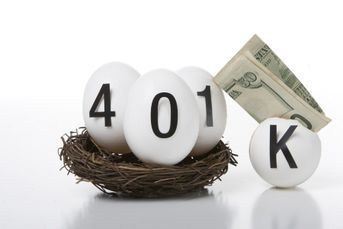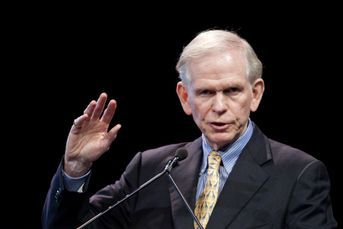Stocks extend January slide, hit by weak earnings, emerging markets turmoil
Worst January since 2010 as S&P 500 loses 3.6%, first monthly decline since August 2013.
U.S. stocks fell, sending the Standard & Poor’s 500 Index to its worst January since 2010, as earnings reports at Amazon.com Inc. and Mattel Inc. disappointed investors and turmoil in emerging markets continued.
Amazon slumped 11% after the world’s largest Web retailer reported profit and sales that trailed analysts’ estimates. Mattel Inc. sank 12% after a drop in Barbie sales weighed on results. Google Inc. jumped 4%, pacing gains in technology shares, after sales topped estimates on growing advertising spending during the holiday season.
The S&P 500 retreated 0.7% to 1,782.43. The index fell 0.4% over the past five days for a third week of losses, the longest streak since May 2012. The Dow Jones Industrial Average dropped 149.76 points, or 0.9%, to 15,698.85, the lowest in almost three months. About 7.8 billion shares changed hands on U.S. exchanges Friday, 25% above the three-month average.
“It seems investors can expect increased volatility and more modest returns as the year unfolds,” Terry Sandven, chief equity strategist at U.S. Bank Wealth Management, said. He helps oversee $112 billion. “We need earnings to drive the market to meaningfully higher levels and to do that you need an improving economy. We’ll get a better read on that over the next week.”
The S&P 500 fell as much as much as 1.2% Friday to 1,772.26, approaching its lowest level since Dec. 18.
BULLS `DEFENDING’
“The bulls are defending their turf,” Ryan Detrick, senior technical strategist at Schaeffer’s Investment Research in Cincinnati, said. “When you see those December lows start to hold tough, that’s the bulls starting to sink their teeth in and defend.”
The S&P 500 fell 3.6% in January, its first monthly decline since August, as emerging-market currencies slumped amid signs China’s economy is slowing. While the benchmark has retreated in January 24 times since 1950, the gauge ended the year lower than its Jan. 31 reading in only 11 of those years, according to data compiled by MKM Partners. A lower start to the year resulted in a full-year decline for the index 58% of the time.
The S&P 500 last fell to start the year in 2010, when the gauge rallied 17% in the next 11 months to finish the year with a 13% gain.
A report Friday showed consumer spending climbed more than forecast in December even as incomes stagnated. Household purchases, which account for about 70% of the U.S. economy, rose 0.4%, after a 0.6% gain the prior month that was larger than previously estimated, Commerce Department figures showed. Incomes were unchanged, pushing the saving rate to the lowest level in almost a year.
The Thomson Reuters/University of Michigan final January index of consumer sentiment fell to 81.2 from 82.5 a month earlier. The median forecast of 68 economists in a survey called for 81 after a preliminary reading of 80.4. Estimates ranged from 79 to 82.5. The index averaged 89 in the five years before December 2007, when the last recession began, and 64.2 in the 18-month contraction that ended in June 2009.
Earlier this week, the Federal Reserve decided to reduce its monthly bond purchases by $10 billion. Three rounds of U.S. monetary stimulus helped the S&P 500 rise as much as 173% from a 12-year low in 2009.
‘BEARISH, DEFENSIVE’
“I’m really bearish and defensive at the moment,” Daniel Weston, a fund manager at Aimed Capital GmbH in Munich, said by telephone. “Amazon was a big concern because the earnings were a reflection on the consumer. I’m concerned about growth and inflation coming off, continuing to trend lower.”
The Chicago Board Options Exchange Volatility Index (VIX) rose 6.5% Friday to 18.41. The gauge of S&P 500 options known as the VIX has gained 34% this year.
About 79% of the companies in the measure that have posted earnings this season exceeded analysts’ projections. Profit at S&P 500 companies probably rose 8.3% in the fourth quarter of 2013 and sales increased 2.6%, analysts’ estimates compiled by Bloomberg show.
Seven out of the 10 main industries in the S&P 500 fell Friday, as energy producers, consumer-discretionary companies and financial firms led declines. Utilities advanced 0.8% for the top gain.
Amazon tumbled 11%, the most in two years, to $358.69. The Seattle-based company said after yesterday’s market close that earnings rose to 51 cents a share in the fourth quarter, falling short of the 69-cent profit that analysts projected on average. Sales growth slowed outside the U.S., while holiday shipping costs surged. Revenue rose 20% to $25.6 billion, trailing the $26.1 billion average estimate.
(Bloomberg News)
Learn more about reprints and licensing for this article.








